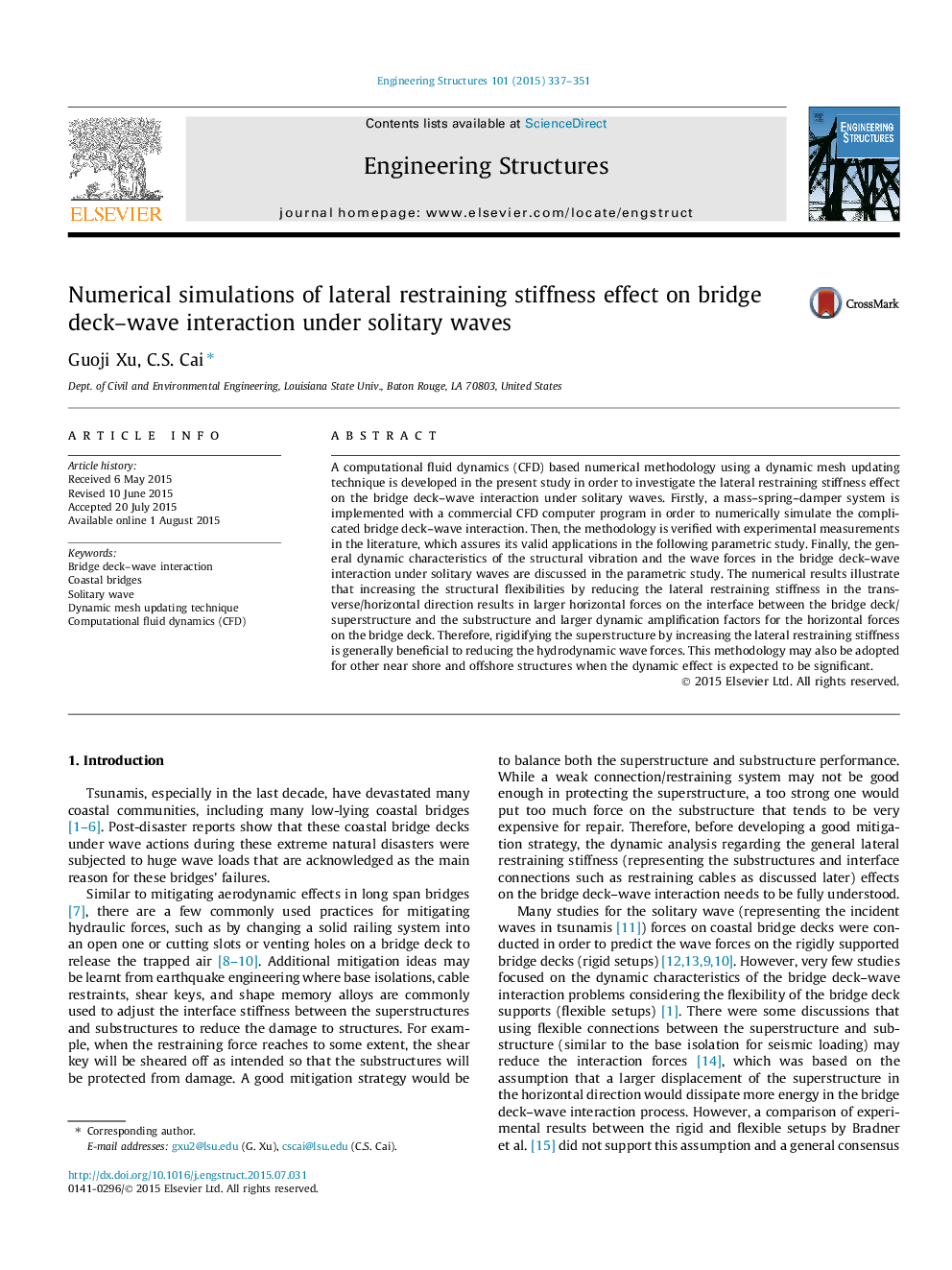| Article ID | Journal | Published Year | Pages | File Type |
|---|---|---|---|---|
| 266047 | Engineering Structures | 2015 | 15 Pages |
•A numerical methodology is developed to study the bridge decks with different flexibilities.•The proposed methodology is verified with analytical results and experimental results.•This methodology can help predict and discuss the bridge deck–wave interaction topics.
A computational fluid dynamics (CFD) based numerical methodology using a dynamic mesh updating technique is developed in the present study in order to investigate the lateral restraining stiffness effect on the bridge deck–wave interaction under solitary waves. Firstly, a mass–spring–damper system is implemented with a commercial CFD computer program in order to numerically simulate the complicated bridge deck–wave interaction. Then, the methodology is verified with experimental measurements in the literature, which assures its valid applications in the following parametric study. Finally, the general dynamic characteristics of the structural vibration and the wave forces in the bridge deck–wave interaction under solitary waves are discussed in the parametric study. The numerical results illustrate that increasing the structural flexibilities by reducing the lateral restraining stiffness in the transverse/horizontal direction results in larger horizontal forces on the interface between the bridge deck/superstructure and the substructure and larger dynamic amplification factors for the horizontal forces on the bridge deck. Therefore, rigidifying the superstructure by increasing the lateral restraining stiffness is generally beneficial to reducing the hydrodynamic wave forces. This methodology may also be adopted for other near shore and offshore structures when the dynamic effect is expected to be significant.
